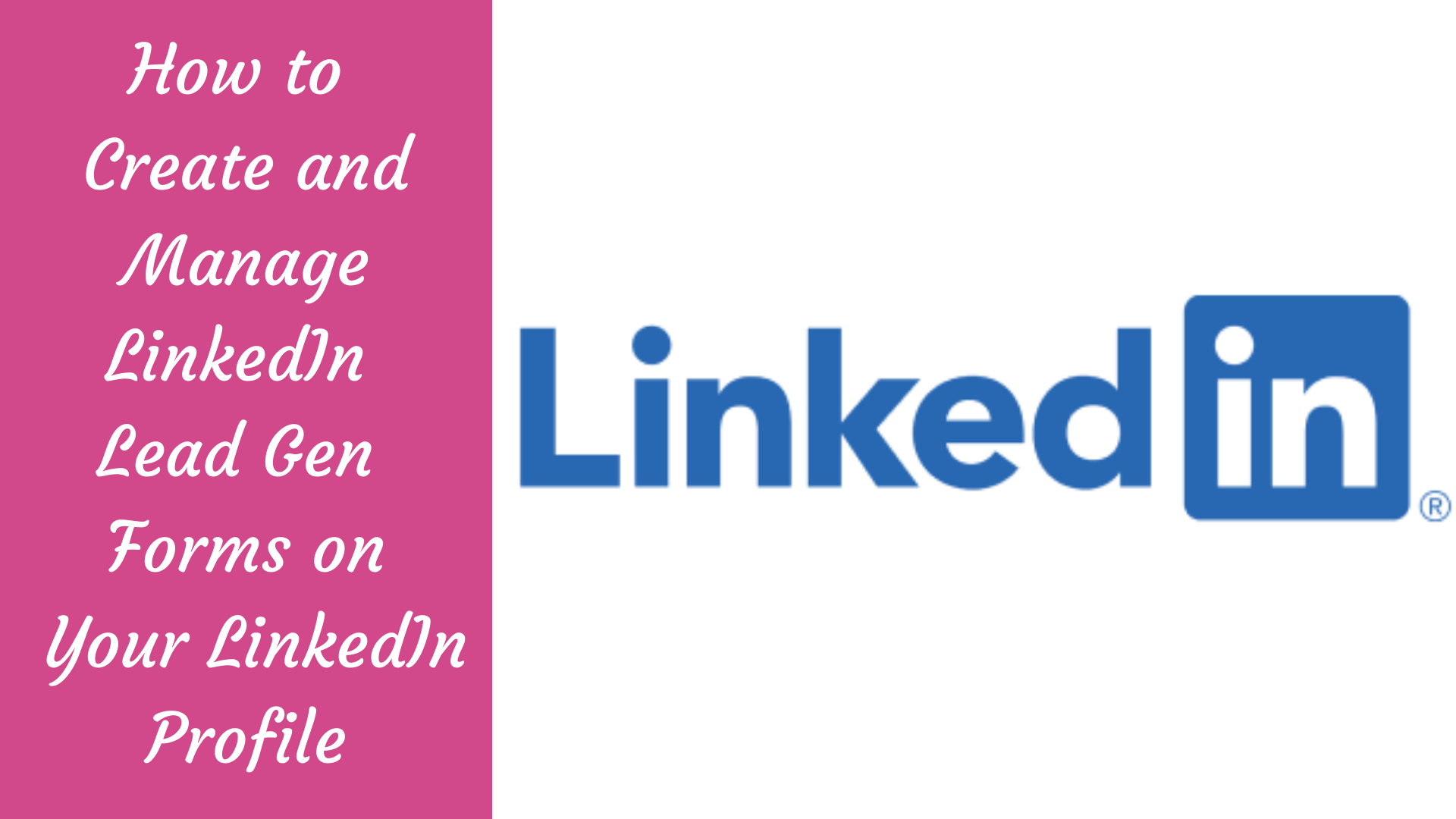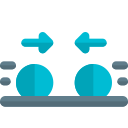The process of managing a lead gen form on your LinkedIn profile can be intimidating. Is it worth the time? Will I get leads from this? How do I know if my form is working properly? This blog post will answer all these questions and more, so you can make an informed decision about whether or not to add a lead gen form to your profile page.

LinkedIn is one of the most important business social networks for generating leads.
LinkedIn leadgen Forms are a new feature that help you to create customized forms on your linkedin profile, which will then appear as an overlay in targeted profiles and groups.
These forms allow you to collect information from anyone who wants it, so long as they have internet access - no need for them to fill out any sign-ups or use any special apps!
This post can give you all the info about how to set up linkedin lead gen forms on your linkedin profile and start generating leads today!

Login in LinkedIn, click "settings" and then select the tab that says "Profile". Underneath your profile image is an option called "Edit public profile", when you select this, you will be directed to another page where all of your profile information is located.
Scroll down to the bottom of this page, and you will see a section called "Lead Gen Forms".
Click on "Add form" and you will be directed to a new page where you can create your linkedin lead gen form.
There are many different types of fields that you can add to your linkedin lead gen form:
- Custom
- Text Field (for example, "what is your name?")
- URL (you can add a link to your linkedin profile!)
- Email Address
When you are finished selecting the fields that you would like added to your linkedin leadgen form, click on "Add form" and you will be directed to a new page that confirms the creation of your linkedin lead gen form.
This form will now appear as an overlay on targeted LinkedIn profiles and groups.
When someone fills out your linkedin leadgen form, their information will be automatically added to a list in your linkedin account!
You can then export this list as a CSV file and use it to send targeted messages to your leads.
LinkedIn Lead Gen Forms are an incredibly powerful tool for generating leads on LinkedIn - be sure to start using them today!
For sponsored content initiatives, LinkedIn Lead Gen Forms are accessible. You can use them or not, and they won't cost you anything, so it's definitely worth experimenting with them to see how they affect lead creation.
Lead Gen Forms essentially add a call-to-action to your sponsored content advertising, inviting viewers to sign up, download your e-book, or perform whatever action you want.
Users will be welcomed by a sign-up form inside the app when they click the CTA; however, instead of filling out fields, LinkedIn will automatically pull in information from their account, so all users have to do is confirm their email address and hit the submit button.
Then, depending on where you want to send them, they'll see a thank you page with a link to your content or website.
However, this does require some setup on your part, so let's look at how to develop LinkedIn Lead Gen Forms.

To use Lead Gen Forms, you must first build a sponsored content ad, as this is the only format that supports the feature.
Following that, you'll be asked whether you want to use your ad to drive traffic or use Lead Gen Forms to generate leads. To use this feature, you'll need to select the second option.
You'll be asked to choose whatever post you want to sponsor – or create fresh sponsored content from scratch – after you've named your campaign and selected Lead Gen Forms.
You can also create Lead Gen Forms for existing campaigns in Campaign Manager.

You'll be asked to design your form template when you've chosen (or generated) the material you wish to promote.
You have the option of using the standard format or creating your own:
There's nothing complicated about this. You simply need to give your form a name (which will not be visible to users), select a headline, and supply any extra information you wish about your offer.
If you wish to reassure users about their data, you may also add specific privacy policy details.
One thing to keep in mind is that your privacy policy page must have a legitimate URL.
You may then select which information LinkedIn obtains from user accounts (a maximum of seven fields).
By default, first and surname names, as well as an email address, are requested, but you can optionally request additional contact, location, and professional details, which your Lead Gen Form will collect automatically.
On your Lead Gen Forms, users will be able to see what information you're collecting from them, so consider how much information you believe they'll be ready to share.
These forms eliminate the need to type anything out, but they do not eliminate the apprehension about disclosing personal information. Keep this in mind, and be aware that you may need to experiment a little to get the best results from these forms.
The next step is to select the thank-you message that users will view after submitting their information.
When you're finished, click Save, and you're done. You may now specify your ad targeting parameters as usual, and your new Lead Gen Form will be ready to use.
As I previously stated, the goal of LinkedIn Lead Gen Forms is to increase lead generation campaign conversion rates.
It's also a decent implementation, with a lot of advantages to using the new functionality.
Get rid of the friction.

By removing friction, the goal of the game with Lead Gen Forms is to make it easier for consumers to convert.
Users can convert with just two clicks, requiring an extremely low level of commitment on their behalf. When compared to the traditional promoted content format, this results in a significant improvement for mobile consumers.
Less steps, more information
LinkedIn Leadgen Forms demonstrate that you can obtain more information from consumers without negatively impacting conversion rates.
It all boils down to how you design the form-filling experience, and LinkedIn does a fairly decent job of it.
This allows you to collect more data without affecting conversions, as well as choosing which types of data to collect and design advertising campaigns based on them.
Do you want to recruit CEOs? Then, with them in mind, develop your campaigns and include "Job title" as one of your fields to ensure you're obtaining the proper sign-ups.
Is there a chance of double conversions?
The possibility for double conversions with LinkedIn Lead Gen Forms is something I'll be keeping an eye on in the coming months.
Users will be welcomed with your thank you message and invited to visit your site after clicking the submit button, giving you the opportunity to target them with another offer.
Of course, you'll already have their email address, so the goal now is to get a more valuable conversion — for example, free trial sign-ups, product purchases, social shares, or whatever else you think could benefit this lead.
Integration with 3rd-party applications
You can combine LinkedIn Lead Gen Forms with a variety of third-party marketing solutions utilising Driftrock, Zapier, or Oracle Eloqua. This means you may use the new capability to collect data from LinkedIn and automate the process of nurturing your leads.

While I'm looking forward to working with LinkedIn Lead Gen Forms, I can already see a couple drawbacks. None of these (along with the potential benefits) have been confirmed, but I'll be keeping a watch on a few things in the coming months.
They don't address the issue of web forms.
Actually, there's no need to double-check this one. Lead Gen Forms have a lot to offer LinkedIn marketing campaigns, but let's be clear: they don't address the form design challenge that most businesses face.
If your online forms are structured and optimised properly, LinkedIn Lead Gen Forms will make little difference because your forms will already be converting across all devices, for all of your ad campaigns, and on every network.
The reason LinkedIn created this feature isn't because promoted content advertising aren't working; it's because businesses aren't providing a user-friendly experience after they arrive on their site.
Rather than waiting for Google, Facebook, or anyone else to develop a bunch of web forms for you, take control of your own lead generation by creating and optimising conversion-optimized forms.
The correct form optimisation tool will also assist you enhance performance and conversion rates, something LinkedIn Lead Gen Forms won't provide.
They may cause friction.
Assume you have a user-friendly sign-up process on your website that is geared to capture leads from LinkedIn and other lead generation channels.
If this is the case, Lead Gen Forms may actually make the conversion process more difficult.
Instead of immediately accessing your content after clicking through to your site, the CTA on promoted content advertising will direct people through a multistep sign-up process before they can access it.
Here's where I see a potential stumbling block.
Bye-bye, traffic.
In-app conversions always have a drawback: the possibility that traffic will never reach your website.
You might think this is a tiny price to pay if you already have their email address, but losing traffic might cost you other conversions, helpful analytics data, possible ad money, and other branding chances.
All of the advertising behemoths are developing their own "walled garden" systems, making it more difficult for people to quit.
It would be a tragedy if LinkedIn followed in the footsteps of Google and Facebook.
Don't listen to me or anyone else when they say LinkedIn Lead Gen forms are good or bad for your business.
If you're advertising on the network, give them a shot and see how much of a difference they make in terms of lead generation.

Keep in mind that your results will differ depending on the type of content, advertisements, and campaigns you develop. Lead generation forms will not solve all of your problems.
Also, remember what I said before about making your own site's form and lead generation experience the best it can be. It's possible that your time and effort would be better spent enhancing this process in order to achieve greater results.
Yes, it's that straightforward. With that out of the way, here are some of the other tools we'll employ in these lead creation strategies:
Phantombuster is a data extraction and automation tool that does not require the use of code. We'll use it to create prospect lists with contact information.
Zapier - Use it to connect your apps and workflows. Connect Expandi to your email outreach campaign tool, for example, to create a real omnichannel campaign.
Lemlist — Our go-to email application for sending cold emails that receive responses.
Lempod - To get a list of relevant people from your niche commenting on your content and enhance your LinkedIn post views and interaction.
BuiltWith - To find websites that use specific technologies. We'll use it to identify a list of sites that use Albacross, for example, and then reach out to that target demographic.
FindThatLead is a website that helps you find leads. This will be used to submit our list of site domains and locate their email addresses.
To scrape emails connected with specified website domains, use Hunter.io.
That's all there is to it. Now, if you're looking for ready-to-use LinkedIn lead generating tactics that you can imitate now – right down to the precise templates... Here are some of our personal favorites.